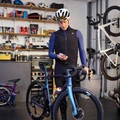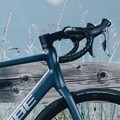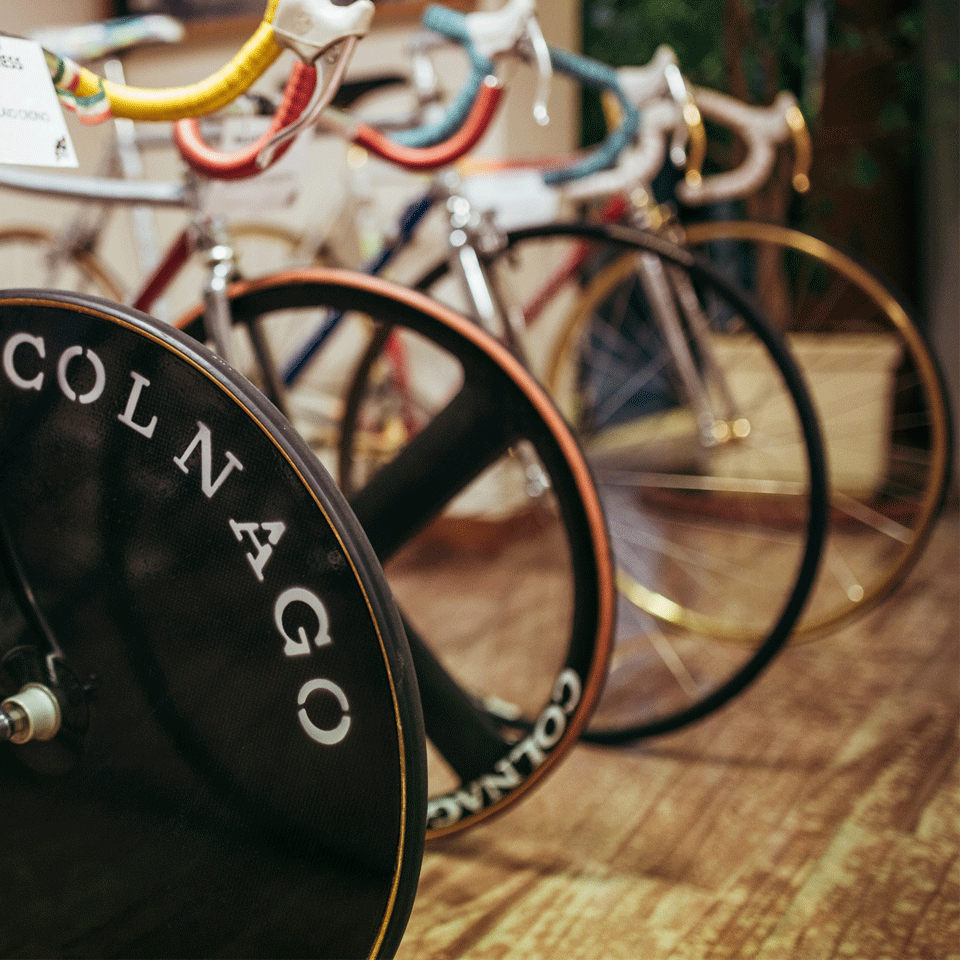
Colnago Factory & Museum Visit
A mecca for cyclists, the Cambiago headquarters of Colnago just outside Milan contains a museum housing a huge range of Colnago masterpieces, past and present. Each and every C64; the company's latest road frameset, is hand built in the factory underneath Ernesto’s house, and we were lucky enough to get a tour of the whole complex.

From humble beginnings to one of the most successful and well-respected bike manufacturers in the world, Colnago’s founder, Ernesto, has a rich history. At just age 13, he falsified papers to get his first job in a mechanics shop, becoming an apprentice and welding bike tubes.
By the 1950's, he’d set up on his own, and in 1954, the Colnago brand was officially born. Fast-building a coveted reputation as both mechanic and bike manufacturer, he joined the Molteni team in 1962 as their team mechanic. By 1968 the professional team had Colnago as their sponsor. Colnago's trademark Ace of Clubs (Asso di Fiori) didn't come about until 1970, and was inspired by Dancelli's win in Milan-San Remo, riding for Molteni aboard a Colnago.

Colnago's reputation has always been based on the company's sublime craftsmanship, consistently producing high-quality steel bikes from the very beginning, and leading innovation in bike design and manufacturing. A forward-thinking man, Ernesto is always searching for the next big thing, and much of his inspiration comes from up and coming riders, those leading the way in professional road racing, and breaking records.

Collaborating with Ferrari in 1986, the combined ideas of Ernesto, with Enzo Ferrari's Formula One technology and expertise made them pioneers in carbon framed bike manufacturing. The Colnago Concept was the first carbon frame to be developed, and, although not commercially successful, the seed was planted allowing the ideas and technology to grow over the coming years. It wasn't until the arrival of the C35 that carbon was proven as a material durable enough for the cobbles and light enough for the toughest climbs.
From the very beginning until the present day, Colnago have been at the forefront of innovative technology, responsible for a number of firsts in the industry; straight forks, disc brake road bikes and the use of carbon fibre in frame manufacture to name but a few. Colnago bikes have taken riders to the top step of countless podiums, with Olympic, Grand Tour, and World Cup wins.

Ernesto turned 86 this year and back in February we were treated to a pre-C64 launch day tour of the factory and museum. Cambiago, on the outskirts of Milan, is the location of the business, as well as the house in which Ernesto lives. Just like the end products to emerge, there is an air of understated style and it would be quite easy to drive straight past. The factory is, in fact, below Ernesto's house, which is given away by the 'Asso di Fiori' (Ace of Clubs) on the front gate. The entire complex is dotted with small details such as this; even the drains covers feature the famous emblem.

The basement factory used to build steel frames but is now purely for carbon fibre models, and since the C60 went out of production early in 2018, only the C64 is produced here.
Around 100 framesets are produced per week and Colnago have done away with the traditional geometry of its predecessors, now producing just sloping and high geometries.

Designed by Colnago, the custom carbon tubes and lugs are made in Northern Italy by an aerospace and marine supplier. Carbon parts are machined by diamond saws, with a different saw for each area of the frame. Aerospace glue is used, to perfectly mimic the strength of carbon fibre, and tubes are hand glued and then joined with the lugs. A slow yet precise process, each size of frame requires the use of a different rig for moulding the tubes and lugs. Cured in a low temperature oven for one hour, excess glue is then removed and another layer added.

Once baked, frames are sent to another area to be finished. Unlike other areas of the frame, the dropouts are drilled by hand. The framesets are then sanded before bottle mounts and cable guides are added. That being complete, frames are delivered to Florence for painting, before returning to Milan.


Ernesto made a beautiful and very special Mexico gold bike for Pope John Paul II in 1979. Constructed from steel and plated in 18 carat gold, he presented the bike at the Vatican. After the Pope's death, the bike was auctioned off but later repurchased by Colnago and is now shown off in the museum.

A bike created for Tony Rominger to break his own hour record, set in 1994, this monocoque C42 masterpiece came complete with a rough surface on the disc wheels to cut through the air. Aerodynamic carbon handlebars and a razor shaped crankset also featured. Considering it too aerodynamic and containing too much innovation, the UCI would not permit it for use.


Ballerini's 1998 Paris-Roubaix winning bike is still covered in mud from the race. The second of three one-two-threes for the dominant Mapei team, this race was first won on a carbon road bike in 1994, the Colnago C40.
As a cyclist, a visit to Cambiago is a must when in the Milan area. This is a unique opportunity to gain an insight into both the history of Colnago and experience the workings of the factory where each and every one of their top-end C64 road framesets is built.













